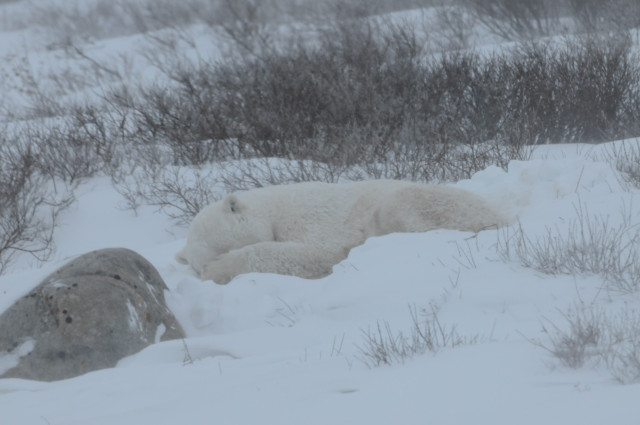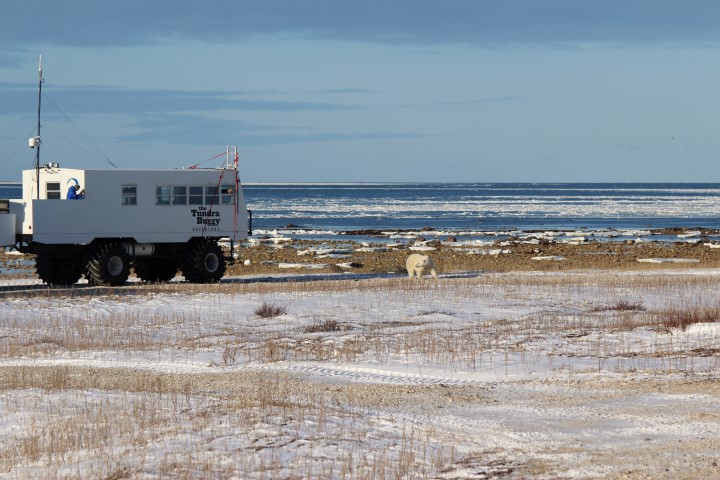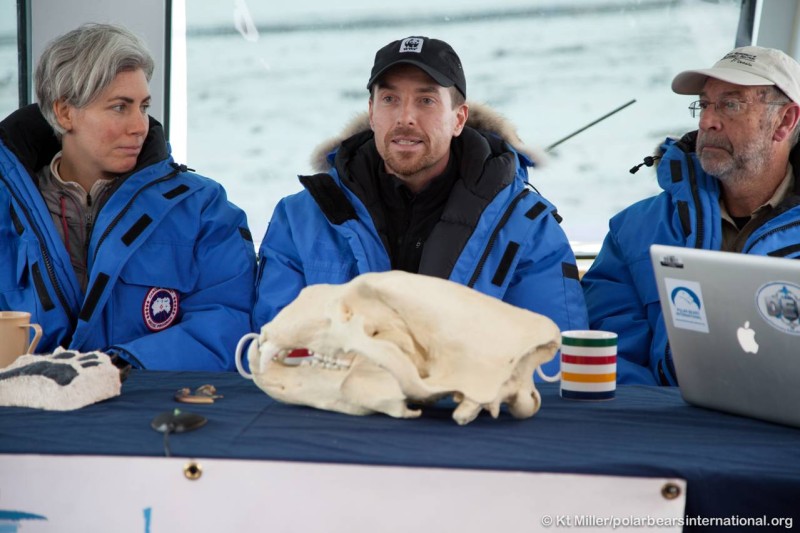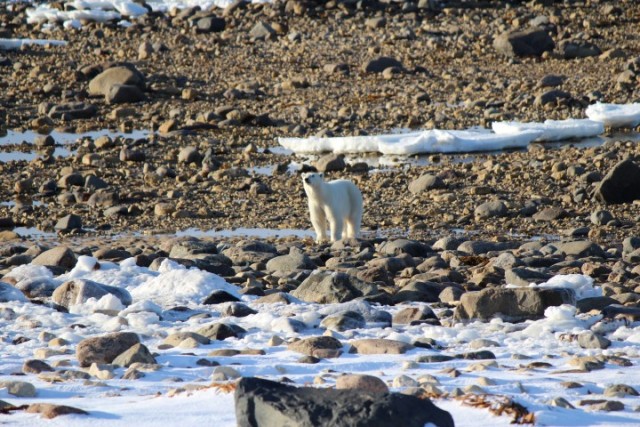Around the world, polar bear researchers use satellite collars to track where bears go, and how they’re adapting to a fast-changing Arctic. We follow a number of these bears on an interactive map:
Because the data is (almost) live, you can watch unusual and exciting behaviour unfold as the researchers do.
This year, researchers at the University of Alberta watched a polar bear mother and cub with interest.
Polar bears in Canada’s Western and Southern Hudson Bay tend to stick to a script – they wait on shore each fall for the ice (and seals) to return, and spend the winter gorging on as many seals as possible. Then spring ice breakup forces them back to shore, where they have little opportunity to eat until the ice returns.
X12777, aka Green Bear, seemed to have a different idea:

Track of bear X12777, Hudson Bay, Canada
Although the 19 polar bear populations are generally well-defined, boundaries shift and bears move between populations from time to time. But to date, no polar bear from Western Hudson Bay had been observed to move so far east.
However, this bear’s journey was not as exciting as it first seemed. The researchers soon realized that the signals sent by the bear collar matched the trajectory of the sea ice – in other words, the collar was no longer attached to a moving bear, and was simply floating along on the melting ice.
Satellite collars can fall off prematurely if, for example, they are unusually loose or the internal clock of the collar is wrong, triggering the release mechanism early. We hope that’s what happened here, although it’s also possible that the bear has succumbed to illness or injury.
If she’s still healthy, we may encounter her again. Each bear receives a permanent tattoo on its lip, so researchers can recognize it, and understand how the bear’s health and condition changes over time in response to its environment.
Although Green Bear’s story is over for now, there are more polar bear tracks to follow:
In Western Hudson Bay, Purple and Blue are finishing a season on the ice and heading back to shore. Follow them on our map here.
And on Svalbard, four new bears (and their cubs) are starting their summer journeys. Follow along here.







